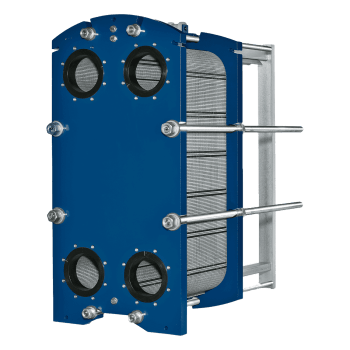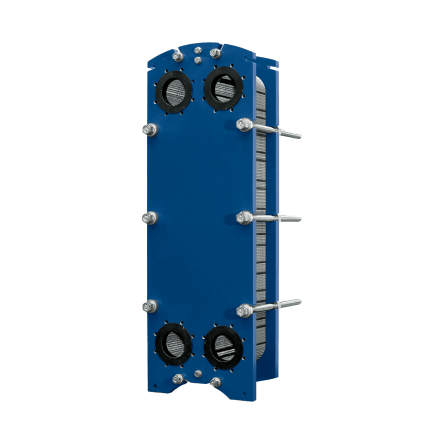Gasketed plate heat exchangers
GASKETED PLATE ITEX
ITEX gasketed plate heat exchangers are particularly well suited to exchanges between two fluids, and therefore to a wide range of applications.
Water flow rate: up to 800 m3/h
Plate material: 304 stainless steel - 316L stainless steel - 254 SMO (except 10TEE990+) - titanium
Gasket material: NBR - EPDM Prx - FPM
Frame material: carbon steel - stainless steel
18 models available
Liquid flow rates: up to 800 m3/h
Pressure: up to 25 bar
ITEX gasketed plate heat exchangers are particularly well suited to exchanges between two fluids, and therefore to a wide range of applications:
- Heating sub-stations
- Domestic water heating
- Swimming pool heating
- Buffer on heat pump
- Recovery from corrosive discharge
- Geothermal energy
- Oil refrigeration
- Industrial processes
- Excellent transfer coefficient, reduced surface area
- Ultra-slim: takes up little space
- Easy to install
- Easy to maintain
- Very low pinch-point temperature possible
- High corrosion resistance
- Low-capacity circuits
- Plates can be added to meet changes in capacity demand
- Unit can be cleaned in-place using a circulation system (NEP or CIP)
- Max. differential pressure = max. operating pressure
18 models available
Liquid flow rates: up to 800 m3/h
Pressure: up to 25 bar
ITEX gasketed plate heat exchangers are particularly well suited to exchanges between two fluids, and therefore to a wide range of applications:
- Heating sub-stations
- Domestic water heating
- Swimming pool heating
- Buffer on heat pump
- Recovery from corrosive discharge
- Geothermal energy
- Oil refrigeration
- Industrial processes
- Excellent transfer coefficient, reduced surface area
- Ultra-slim: takes up little space
- Easy to install
- Easy to maintain
- Very low pinch-point temperature possible
- High corrosion resistance
- Low-capacity circuits
- Plates can be added to meet changes in capacity demand
- Unit can be cleaned in-place using a circulation system (NEP or CIP)
- Max. differential pressure = max. operating pressure
Commercial brochure
Instruction manual



















